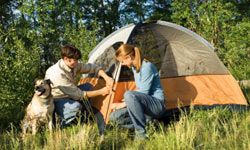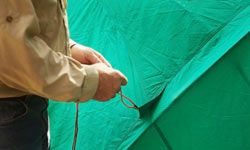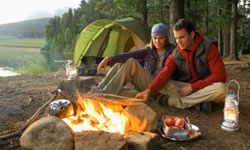So, you're planning to leave the comfort of your home to get in touch with nature and spend a few nights outdoors? Before heading out into the wilderness, you'll want to take a few minutes to plan what you'll need. The first question to ask when preparing for a camping trip is whether you're pitching a tent in a campground or hiking into the backcountry. If you're embarking on a several-day backpacking expedition, you'll probably want to leave that eight-person dome tent at home, and instead opt for a lightweight tent, or even a bivouac sack.
Wherever you choose to go camping, there are a few general rules to follow. First, leave as little impact on the land as possible. You also want to practice good fire safety when setting up your campfire and cooking area. And you need to make sure your food doesn't attract bears and other critters. Of course, you have to choose a campsite before any of these rules apply, so read on for our guide to preparing a safe, comfortable campsite where you can get a good night's sleep.
Advertisement














